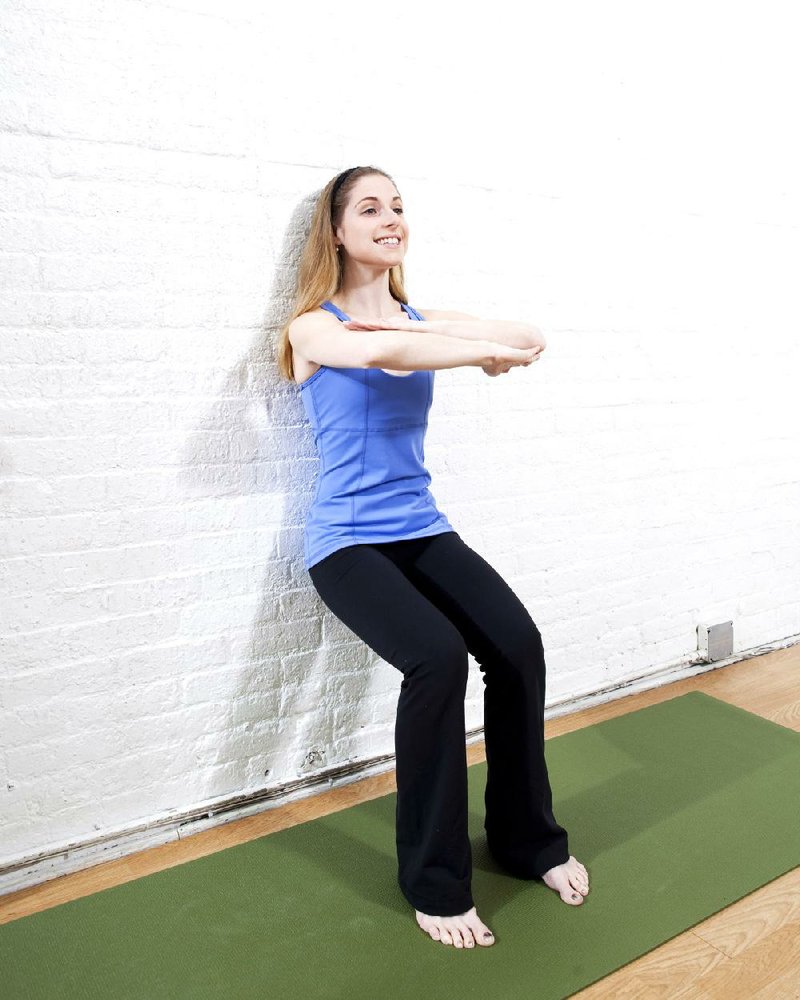LITTLE ROCK — Gluteal amnesia: It’s a silly name for a concerning condition.
“It’s fun anytime you can talk about the butt, especially now that it’s getting to be beach season,” said Al Lyman. “But then with this, you’re thinking, ‘Where’s your butt? It’s gone.’”
Lyman, co-owner and coach at Pursuit Athletic Performance in Old Saybrook, Conn., and others believe gluteal amnesia is a silent predator - one you never anticipate, but because of our lifestyle choices, it’s seen more and more today.
Gluteal amnesia refers to your rearmost muscles forgetting how to work. Those powerful tissues that range from your lower back to the front of the thighs are key in helping you move, whether walking, running, biking or even just getting up from a chair.
Stuart McGill, a professor of spine biomechanics at Canada’s Waterloo University, coined the term when researching subjects who came in with chronic back pain, he said. The pain, he said, can be a cause and effect. He saw that people experiencing chronic back pain also weren’t engaging their rear, and they compensated by firing other muscles even harder. That led to more pain, and creating a cycle.
“People are sometimes using their hamstrings instead of gluteal muscles to extend their hips, which is made worse with gluteal amnesia,” McGill says. “The hamstrings impose more load on the hip leading to troubles at those joints.”
McGill and others said a main contributing trigger for this physical memory loss is that we sit on our fannies more than we use them. Sedentary jobs and tasks that cause us to sit instead of move around are harder on your back once you decide to start moving, McGill said.
Lyman likened sitting to smoking. “It’s pervasive in our society because of lifestyle.”
Take a second and think about how often you sit during your day. You sit at work. You sit while you drive. You sit while you eat.
A study from the Baker IDI Heart and Diabetes Institute in Melbourne, Australia, found ordinary people spending about 15 1/2 hours a day sitting.
That inactivity is a main contributor to gluteal amnesia.
UNBALANCED WORKOUTS
Sitting isn’t the only probable cause. Even if you go to the gym and stay in shape, you can still be at risk for gluteal amnesia. Lyman, who works with athletes at his training center, said that his clients can be in great shape, but if their balance is off, it can throw an entire workout off kilter.
Keeping the pelvis in balance is a big part of that, he said. A phrase that’s tossed around at his facility is “tucking your tail,” which helps activate the gluteals to keep the pelvis in balance.
And Judith Torel, an American College of Sports Medicine-certified health fitness specialist in Albany, N.Y., says bones are just as important as the muscles in this situation.
“Your skeletal system is like the structure of a building. If you’ve got a little extra weight around the belly, or your shoulders are rounded forward and you try to do some exercise, you can be misaligned,” she said. She added that intense athletic events, like triathlons and marathons, are becoming more and more popular. If your balance is even a little off, you could be putting your body through even more work than these sports require.
WAKE UP
Even though the ailment can come on silently, there is hope for a full recovery. You might need to be willing to change how you do things to get back in fighting (or at least standing) shape. Lyman thinks standing workstations at the office will be in store for the future to help correct some of the damaging effects that sitting has done to the body.
“The bottom line is, we live in a society where folks want to take a pill or get a quick fix for a health-related issue when the real long-term solution is to get out of the chair,” he said.
Torel and Lyman recommend first seeing a trainer with a background in sports or a chiropractor to be evaluated. They can check your alignment and give you exercises that isolate your rear as much as possible. Torel said bridges, squats and lunges can do that.
Squeezing those muscles while doing the exercise can help work them even more. After some work, your guteals will be in bathing suit, and operational, shape.
Here are two moves that work.
PELVIC LIFT
Lie on your back with your feet planted on the floor hip width apart, knees bent at a 90-degree angle. Place arms palms down on the floor along the side of your body.
Press your hands into the ground, squeeze your gluteals and lift your hips. Don’t overextend; rise enough for your body to make a straight, diagonal line. Hold that position for a few seconds.
Lower slowly to the ground, rest and repeat. Do 5 to 10 repetitions.
WALL SITS
Stand with your back against a wall and walk your feet about a foot away from the wall.
Slide your upper body down so your knees make a 90-degree angle, keeping your back straight against the wall. Hold for 20 seconds. Fight the urge to place your hands on your thighs - you’ll put more pressure on the wrong muscles.
Inch back to a standing position, rest for five seconds and repeat. Do 5-10 reps.
ActiveStyle, Pages 23 on 06/25/2012

